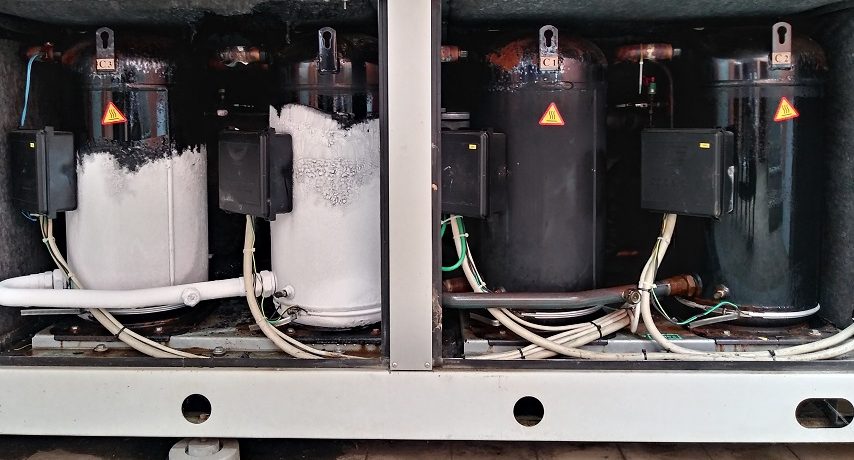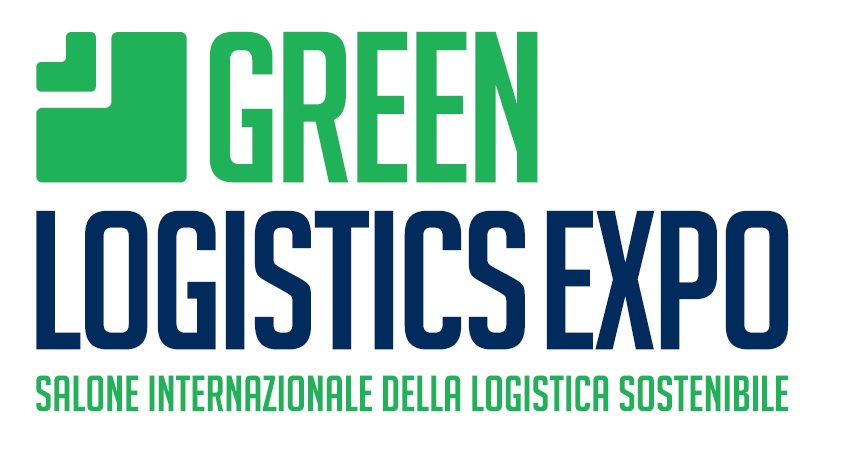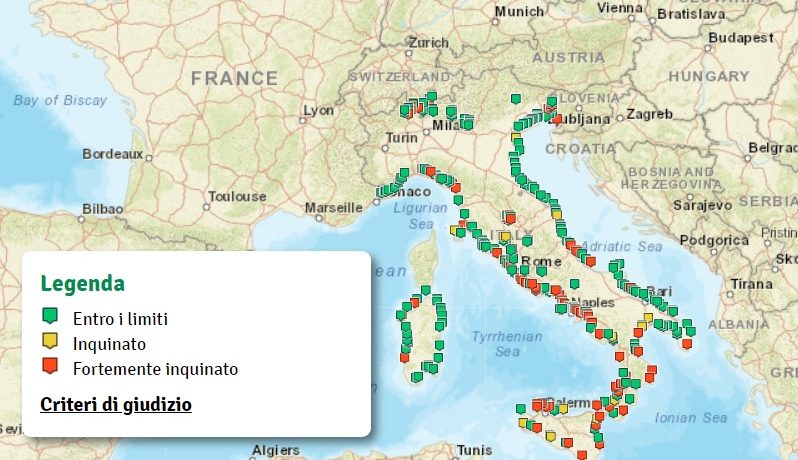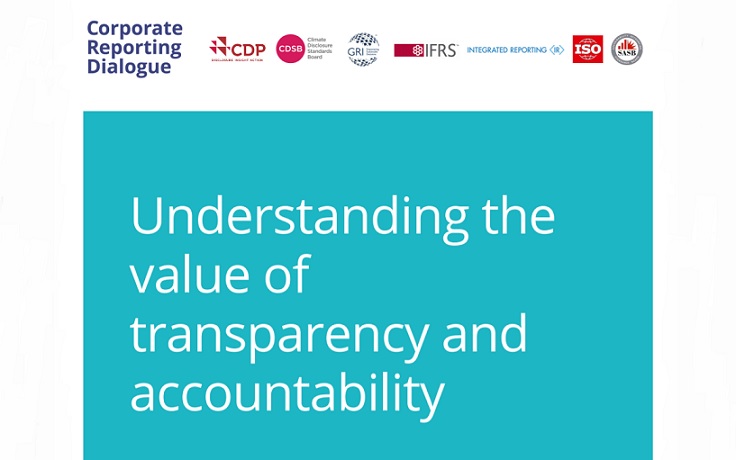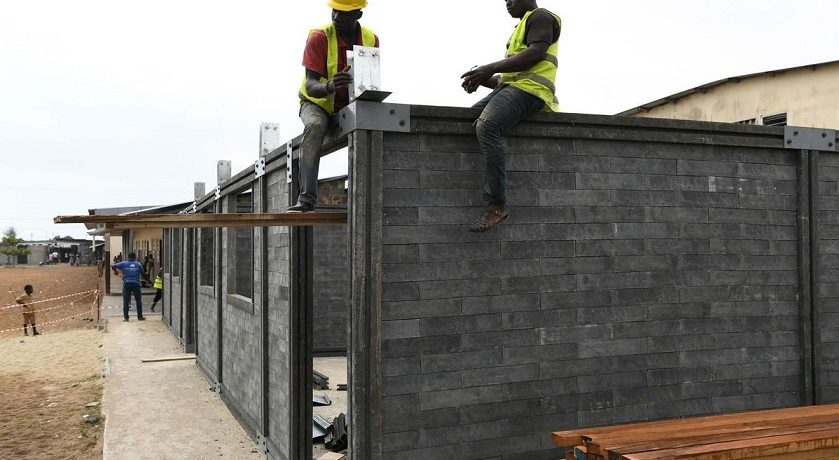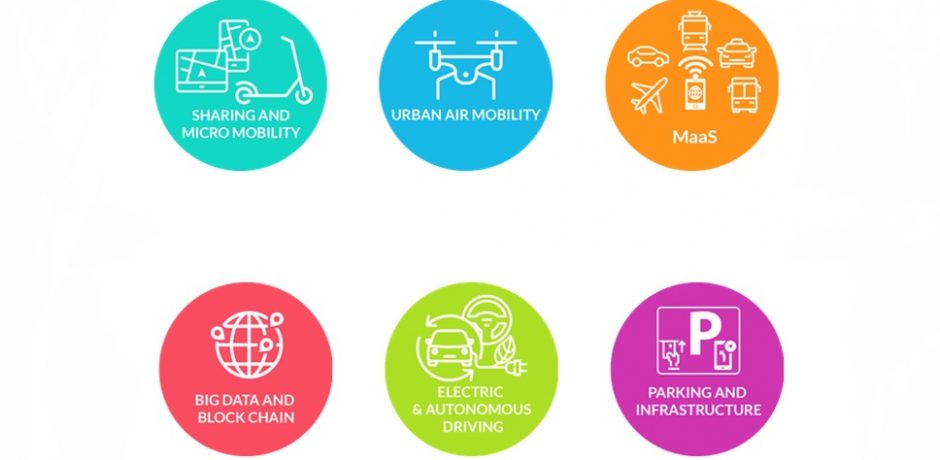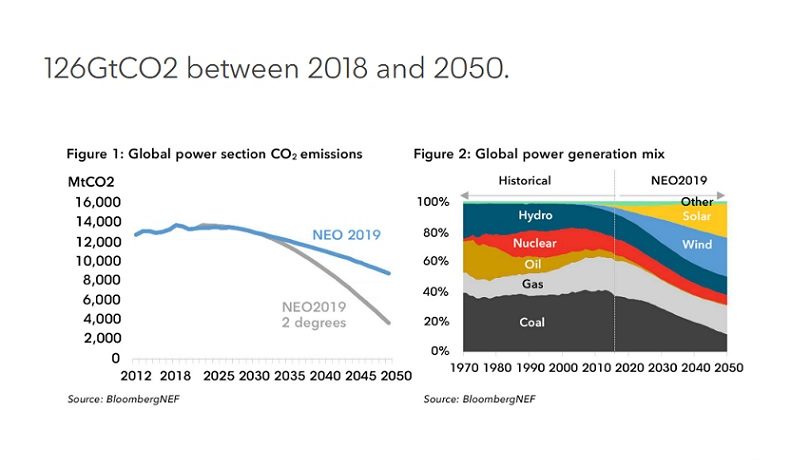Agosto 2019
Refrigerazione scottante attualità: luglio, agosto, si rincorre l’emergenza. Ma i consumi di tutto l’anno? SmartEfficiency per centrali frigo BT e TN, cuore di retail, logistiche, farmaceutici, alimentari, ristorazione, produzioni plastiche, trattamenti metallici.
(altro…)
Adesioni Green Logistics Expo 2020 alla Fiera di Padova. Appuntamenti con operatori, contatti con imprese e organizzazioni internazionali, incontri con le associazioni di settore per definire partnership e attività durante i tre giorni della manifestazione.
La prossima edizione di Green Logistics Expo sta rapidamente prendendo forma e si annuncia come un Salone ancora più focalizzato sulle necessità delle imprese manifatturiere, proiettato verso l’internazionalizzazione e in crescita come spazi espositivi occupati.
Ricco il piano di comunicazione di GLE che convolge tutti i principali media specializzati, sia cartacei che on line, del mondo della logistica e del trasporto, fra i quali anche Radio24, sulla quale sono programmate, da qui all’evento, diverse campagne promozionali, con numerosi passaggi radiofonici nelle ore di massimo ascolto, la sponsorizzazione di specifiche trasmissioni, presenze sul quotidiano di riferimento per il mondo economico, “Il Sole24 Ore”.
La presenza al Transport Logistics di Monaco, agli inizi di giugno, ha permesso di rafforzare i contatti con gli operatori italiani che già avevano partecipato alla precedente edizione di Green Logistics Expo e di toccare con mano l’interesse per il Salone, che è considerato oramai la manifestazione di riferimento italiana del settore.
Sul fronte delle presenze straniere è attivo un tavolo di lavoro con l’Ambasciata Olandese in Italia, per l’organizzazione della presenza una collettiva di aziende dei Paesi Bassi, di tutte le aree tematiche ed espositive di Green Logistics Expo.
Avanzati anche i contatti con operatori della Polonia, un Paese particolarmente importante per la logistica in quanto snodo chiave delle rotte ferroviarie verso l’Asia e la Cina in particolare.
E parlando appunto della Cina, oramai protagonista della logistica globale, trattative importanti sono in corso anche per organizzare la presenza, alla prossima edizione di Green Logistics Expo, di importanti operatori cinesi.
Sul fronte nazionale, si susseguono le adesioni dei principali porti e interporti Italiani, e di numerose importanti aziende di logistica e trasporti.
Di particolare interesse e ricco di risultati, il dialogo avviato con tutte le Associazioni di Categoria del settore per analizzare assieme contenuti e trend sui quali puntare durante il Salone.
Green Logistics Expo è anche una importante occasione di dialogo e confronto per chi rappresenta le imprese e i lavoratori del settore, con i policy makers italiani e comunitari oltre che con il mondo della ricerca.
Si tratta di un aspetto strategico, soprattutto in questo un momento storico, che prevede uno sforzo eccezionale, da parte di tutti gli attori di questo mondo complesso, finalizzato a coniugare gli obiettivi della sostenibilità ambientale, ormai imprescindibile, con quelli della sostenibilità economica e del business.
In questo senso, il convegno di apertura potrà configurarsi come una sorta di “Stati Generali della Logistica” grazie alla partecipazione di tutti i più autorevoli rappresentanti del settore, dai costruttori di veicoli e il coinvolgimento del mondo politico e istituzionale, a partire dai Ministeri delle Infrastrutture e dei Trasporti e di quello dell’Ambiente.
Green Logistics Expo conferma anche in questa sua seconda edizione la formula vincente sperimentata nel 2018: articolazione in quattro macro–aree:
– intermodalità
– logistica industriale e real estate
– e-commerce
– city&logistics, che si focalizza sulla logistica in ambito urbano e più in generale affronta il tema dei nuovi Design urbani.
Trasversali a queste quattro macroaree, saranno i focus specifici su alcuni temi, come ad esempio il food o il trasporto a temperatura controllata, e gli eventi speciali.
Una particolare attenzione sarà dedicata al coinvolgimento dell’Unione Europea, con incontri tecnici dedicati ai corridoi, la presentazione di progetti finanziati dal programma CEF e la partecipazione delle Agenzie che gestiscono i fondi comunitari dedicati ai trasporti sostenibili.
Fiera di Padova, da mercoledì 18 a venerdì 20 marzo 2020
– BYinnovation è Media Partner di Green Logistics Expo
Citytech 2019: anteprima. La 4° rivoluzione industriale è in atto e così anche il mondo dell’automotive sta avanzando ad una velocità impressionante guidato dalla principale tendenza tecnologica degli ultimi anni: la digital transformation.
Sarà proprio questo, dunque, il fil rouge che legherà tutte le tematiche affrontate durante Citytech, l’evento B2B dedicato alla mobilità urbana più accreditato d’Italia, che raccoglie tutte le innovazioni e le best practice del settore sia a livello nazionale che internazionale, diventando così un momento di incontro e discussione per aziende leader, startup, istituzioni, stakeholder, investitori e media.
Come ogni anno, Citytech si aprirà con la Sessione Istituzionale Plenaria in cui le principali autorità istituzionali e governative illustreranno le novità e i progressi portati avanti in Italia nell’ultimo anno.
Il viaggio di Citytech alla scoperta della Digital Transformation proseguirà poi con il susseguirsi di diversi workshop tecnici che avranno come argomento:
Il service design di oggi
– scenari attuali e futuri del rental, pooling, ride hailing, sharing e trasporto pubblico.
Il service design del primo ed ultimo miglio
– dai primi risultati ottenuti con i servizi dedicati alla micromobilità
– allo sviluppo di un trasporto merci elettrico e più sostenibile.
Il service design del futuro
– il potenziale della Urban Air Mobility, uno dei sistemi più sicuri ed efficaci
– per il trasporto aereo di passeggeri e merci in ambito urbano.
I pagamenti digitali
– soluzioni innovative per il pagamento della sosta e del TPL
– grazie all’utilizzo di big data, connettività e blockchain.
Il rapporto con l’utente
– le nuove esigenze della community tra controlli e sanzioni più efficienti
– per ottenere un servizio migliore e alla portata di tutti.
Organizzato con il Comune di Milano, Citytech giunge alla sua settima edizione e verrà ospitato da Milano LUISS HUB il 20 e 21 novembre 2019.
– BYinnovation è Media Partner di Citytech
2a Green Logistics Expo. Dove la Logistica incontra l’Impresa. E’ in piena attività la macchina organizzativa della seconda edizione di Green Logistics Expo, il Salone Internazionale della Logistica Sostenibile, che si terrà alla Fiera di Padova.
Sono ormai definiti gli obiettivi della nuova edizione, dopo i positivi riconoscimenti ricevuti dall’edizione d’esordio, che si è svolta a marzo dello scorso anno.
Un successo certificato dagli operatori e dalle imprese che hanno riconosciuto Green Logistics Expo come il nuovo punto di riferimento che colloca l’Italia su un piano di parità con i principali Paesi europei.
Un evento B2B, dove si danno appuntamento clienti e colleghi per confrontarsi sui mercati europei e globali, che fino ad oggi mancava in Italia; un luogo di incontro tra gli operatori logistici e il mondo della produzione della distribuzione e del commercio.
La formula, apprezzata da espositori e visitatori professionali, rimane invariata. Il salone è diviso in quattro macrosettori: Intermodalità e Trasporti, Logistica Industriale e Real Estate Logistico, ECommerce, City&Logistics e Mobilità Urbana pronte ad accogliere i leader dell’intermodalità ferroviaria e del trasporto merci, della logistica per l’industria e della portualità, dell’e-commerce e dei servizi per la città del domani.
A Green Logistics Expo si troveranno quindi porti, interporti, navi, ferrovie, automezzi, infrastrutture, sistemi di governance, ICT per l’Intermodalità. Un’attenzione particolare sarà dedicata all’Intralogistica e ai profondi cambiamenti che, per effetto della rivoluzione digitale, dell’industria 4.0 e degli obiettivi green stanno cambiando in profondità il “magazzino”.
I nuovi “Design” urbani e il cittadino “onlife”, soprattutto per i temi riferiti al trasporto e alla mobilità, saranno al centro dell’esposizione dedicata alla Logistica Urbana, mentre i luoghi, i modi dello shopping, ormai “scollati”, saranno affrontati negli spazi dell’E-commerce, un fenomeno che ha profondamente cambiato lo scenario dello scambio e introdotto nuove professionalità quali esperti in Analytics e Big Data e dove la logistica deve confrontarsi con sfide sempre più audaci: dall’ultimo miglio alla domanda green, dall’internet delle cose alle difficoltà della blockchain.
Green Logistics Expo, come nella prima edizione, svilupperà anche un articolato programma di convegni, incontri e workshop ideali luoghi di incontro e confronto per rappresentanti istituzionali, amministratori pubblici, ricercatori e studiosi dei trasporti e della pianificazione urbana.
Il programma sarà costruito a stretto contatto con i protagonisti dell’evento e crescerà, giorno dopo giorno, supportato da una adeguata campagna di comunicazione verso tutto il mondo della logistica italiana.
Saranno affrontati gli scenari, le soluzioni tecniche, le innovazioni di prodotto, di modello organizzativo e di business e approfonditi temi quali lo sviluppo dell’intermodalità e delle infrastrutture, la gestione immobiliare e l’automatizzazione dei magazzini con l’utilizzo dell’AI–Artificial Intelligence, la logistica e il commercio nello sconvolgimento dell’e-commerce, i nuovi design urbani in chiave green.
Nella seconda edizione crescono, quindi, gli spazi e gli espositori: ne sono previsti 450 per il 70% italiani. Attesi anche più visitatori (12.000), un buon 20% dei quali provenienti dall’estero, a conferma della vocazione internazionale della manifestazione.
Molte le figure professionali che troveranno a Green Logistics Expo possibili soluzioni alle loro esigenze: in primis naturalmente responsabili logistici e di magazzino, ma anche imprenditori e manager delle imprese non solo di grandi dimensioni. La logistica sia delle materie prime che distributiva è divenuta ormai parte fondamentale del processo produttivo e non è più considerata un semplice servizio. Inoltre le imprese manifatturiere prendono sempre più coscienza che vendere “franco fabbrica” comporta rischi non trascurabili e priva di interessanti opportunità che possono incidere in mondo significativo sulla marginalità.
Gli obiettivi sono chiari: spazi espositivi più grandi, una dimensione internazionale in crescita, con un Paese ospite e un’ancora maggiore vicinanza al mondo dell’impresa e della manifattura e l’aumento di workshop professionali.
18 – 20 marzo 2020 a Fiera di Padova
– BYinnovation è Media Partner di Green Logistics Expo
Solar, Wind, Batteries to Attract $10 Trillion to 2050, but curbing emissions long-term will require other technologies too. Deep declines in wind, solar and battery technology costs will result in a grid nearly half-powered by the two fast-growing renewable energy sources by 2050, according to the latest projections from BloombergNEF (BNEF).
In its New Energy Outlook 2019 (NEO), BNEF sees these technologies ensuring that – at least until 2030 – the power sector contributes its share toward keeping global temperatures from rising more than 2 degrees Celsius. (Importantly, major progress in de-carbonization will also be required in other segments of the world’s economy to address climate change).
Each year, NEO compares the costs of competing energy technologies through a levelized cost of energy analysis. This year, the report finds that, in approximately two-thirds of the world, wind or solar now represent the least expensive option for adding new power-generating capacity. Electricity demand is set to increase 62%, resulting in global generating capacity almost tripling between 2018 and 2050.
This will attract $13.3 trillion in new investment, of which wind will take $5.3 trillion and solar $4.2 trillion. In addition to the spending on new generating plants, $840 billion will go to batteries and $11.4 trillion to grid expansion.
NEO starts by analyzing technology trends and fuel prices to build a least cost view of the changing electricity sector. The results show coal’s role in the global power mix falling from 37% today to 12% by 2050 while oil as a power-generating source is virtually eliminated. Wind and solar grow from 7% of generation today to 48% by 2050.
The contributions of hydro, natural gas, and nuclear remain roughly level on a percentage basis.
Matthias Kimmel, NEO 2019 lead analyst, said: “Our power system analysis reinforces a key message from previous New Energy Outlooks – that solar photovoltaic modules, wind turbines and lithium-ion batteries are set to continue on aggressive cost reduction curves, of 28%, 14% and 18% respectively for every doubling in global installed capacity. By 2030, the energy generated or stored and dispatched by these three technologies will undercut electricity generated by existing coal and gas plants almost everywhere.”
The projected growth of renewables through 2030 indicates that many nations can follow a path for the next decade and a half that is compatible with keeping the increase in world temperatures to 2 degrees or less. And they can do this without introducing additional direct subsidies for existing technologies such as solar and wind.
“The days when direct supports such as feed-in tariffs are needed are coming to an end,” said Elena Giannakopoulou, head of energy economics at BNEF. “Still, to achieve this level of transition and de-carbonization, other policy changes will be required – namely, the reforming of power markets to ensure wind, solar, and batteries are remunerated properly for their contributions to the grid. NEO is fundamentally policy-agnostic, but it does assume that markets operate rationally and fairly to allow lowest-cost providers to win.”
Europe will decarbonize its grid the fastest with 92% of its electricity supplied by renewables in 2050. Major Western European economies in particular are already on a trajectory to significantly decarbonize thanks to carbon pricing and strong policy support. The U.S., with its abundance of low-priced natural gas, and China, with its modern fleet of coal-fired plants, follow at a slower pace.
China sees its power sector emissions peaking in 2026, and then falling by more than half in the next 20 years. Asia’s electricity demand will more than double to 2050. At $5.8 trillion, the whole Asia Pacific region will account for almost half of all new capital spent globally to meet that rising demand. China and India together are a $4.3 trillion investment opportunity.
The U.S. will see $1.1 trillion invested in new power capacity, with renewables more than doubling its generation share, to 43% in 2050.
The outlook for global emissions and keeping temperature increases to 2 degrees or less is mixed, according to this year’s NEO. On the one hand, the build-out of solar, wind and batteries will put the world on a path that is compatible with these objectives at least until 2030. On the other hand, a lot more will need to be done beyond that date to keep the world on that 2 degree path.
One reason is that wind and solar will be capable of reaching 80% of the electricity generation mix in a number of countries by mid-century, with the help of batteries, but going beyond that will be difficult and will require other technologies to play a part – with nuclear, biogas-to-power, green hydrogen-to-power and carbon capture and storage among the contenders.
BNEF’s NEO director, Seb Henbest commented: “Our analysis suggests that governments need to do two separate things – one is to ensure their markets are friendly to the expansion of low-cost wind, solar and batteries; and the other is to back research and early deployment of these other technologies so that they can be harnessed at scale from the 2030s onwards.”
In NEO 2019, BNEF for the first time considers 100% electrification of road transport and the heating of residential buildings, leading to a significant expansion of power generation’s role.
Under this projection, overall electricity demand would grow by a quarter compared to a future in which road transport and residential heat only electrify as far as assumed in the main NEO scenario. Total generation capacity in 2050 would have to be three times the size of what is installed today. Overall, electrifying heat and transport would lower economy-wide emissions, saving 126GtCO2 between 2018 and 2050.
NEO 2019 is the result of a detailed study of the outlook for energy demand and supply, country-by-country, conducted by 65 BNEF analysts around the world. It draws on BNEF’s market-leading work on the evolving economics of different generation sources.
Responsible investment and sustainable development growing priority for private equity finds PwC survey. Responsible investment – involving the management of environmental, social and governance (ESG) issues – is an increasingly significant consideration for both private equity houses (general partners – GPs) and investors (limited partners – LPs), according to a new survey released today by PwC.
The Private Equity Responsible Investment Survey 2019 draws upon the views of 162 respondents from 35 countries/territories, including 145 PE houses. This is the fourth edition of the survey, following on from previous editions in 2016, 2015 and 2013.
The 2019 survey has found that nearly 81% of respondents are reporting ESG matters to their boards at least once a year, with a third (35%) doing so more often. Almost all (91%) report having a policy in place or in development, compared to 80% in 2013. Of these, 78% are using or developing KPIs to track, measure and report on progress of their responsible investment or ESG policy.
Most strikingly, 35% of respondents reported having a team dedicated to responsible investment activity (an increase from 27% in 2016). Of those without a specific function, 66% rely on their Investment/Deal teams to manage ESG matters.
Meanwhile, two thirds (67%) of respondents have identified and prioritised SDGs that are relevant to their investments (compared to 38% in 2016) and 43% have a proactive approach to monitoring and reporting portfolio company performance against the SDGs (up from 16% in 2016).
Will Jackson-Moore, Global Private Equity, Real Assets and Sovereign Fund Leader at PwC, says: ‘This is a really encouraging survey that suggests responsible investment is starting to come of age in terms of driving sustainable business practice. The private equity sector has a vital role to play in supporting sustainable development: the survey highlights that private equity houses and LPs are taking that responsibility seriously and driving genuine change. That is especially important as their role in global capital markets increases.
It is heartening to see that responsible investment is seen as a matter for those at the heart of the investment process and needs to be supported by rigorous monitoring and reporting. LPs are playing a vital role in applying pressure to act on key areas of ESG concerns and in influencing board agendas.
Yet while responsible investment may only be at the ‘young adult’ stage of development, these are signs of increasing maturity.’
Even so, the survey also acknowledges a continued distance between those considering action, and those taking proactive steps. For instance, while 89% of respondents cite cyber and data security as a concern, only 41% are taking action. Similarly, 83% are concerned by climate risk for their portfolio companies, yet only 31% have acted upon this.
Will Jackson-Moore adds: ‘There is a risk of “impact-washing” – where it is claimed that investments have a greater SDG-aligned contribution or positive impact than can be evidenced, or using positive examples of responsible investment to divert attention from other investments where less action has been taken. Yet investors and PE leaders have a role to play in continuing to influence responsible investment behaviour, through demanding more robust and granular reporting around ESG matters. For instance, PwC UK has worked with the well-respected global initiative The Impact Management Project to develop an impact assessment framework based on the SDGs, to support investors. We are at the stage that we can see ESG genuinely driving returns, and enhanced ESG practices can potentially enhance multiples: it may well be the next big value lever.
It is therefore vital for PE houses and investors alike to recognise that even if responsible investment may seem challenging there are numerous solutions and frameworks that can be applied to achieve positive outcomes.’
PwC carried out the survey in September – October 2018 through an online questionnaire. To track the simultaneous maturity of responsible investment in both stakeholder groups, we surveyed LPs and GPs together for the first time. We received responses from 162 participants (124 were GPs, 17 were LPs and 21 were both GPs and LPs) from 35 countries and territories, making it our largest collective sample to date.
The survey asked many of the same questions we have asked our GPs and LPs in previous surveys, to allow for comparison over time. However, it also allowed us to compare and contrast responses from GPs and LPs to the same questions, so as to identify any similarities or differences in approach, which we have highlighted in the report. It also included questions on new thematic areas, like climate risk.

